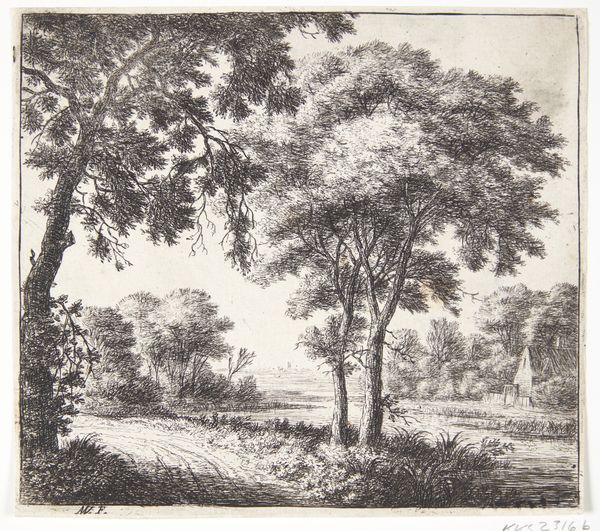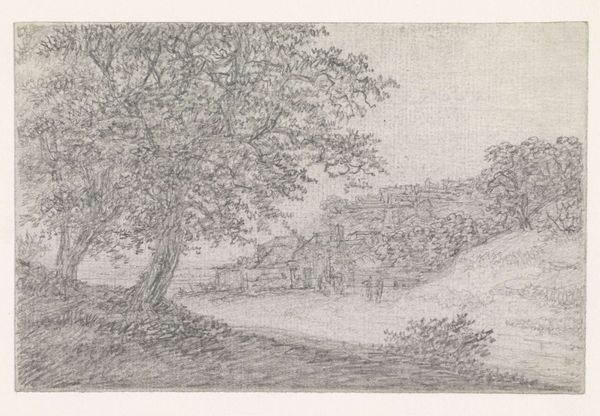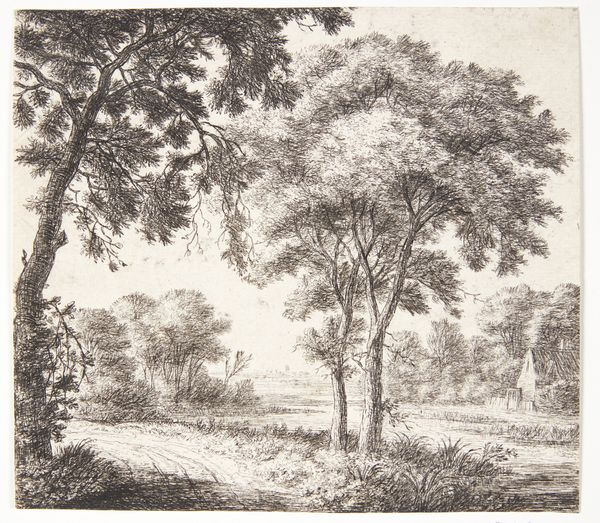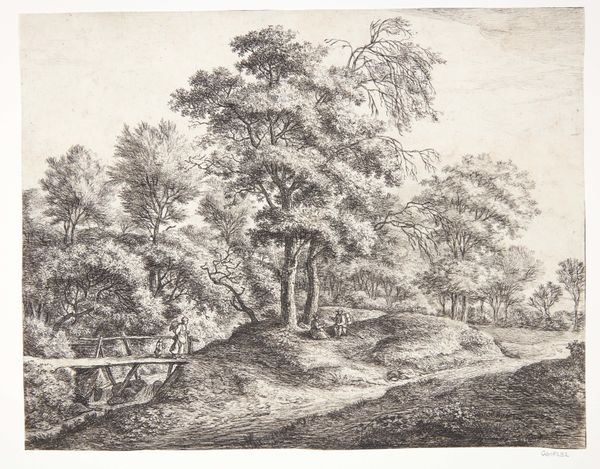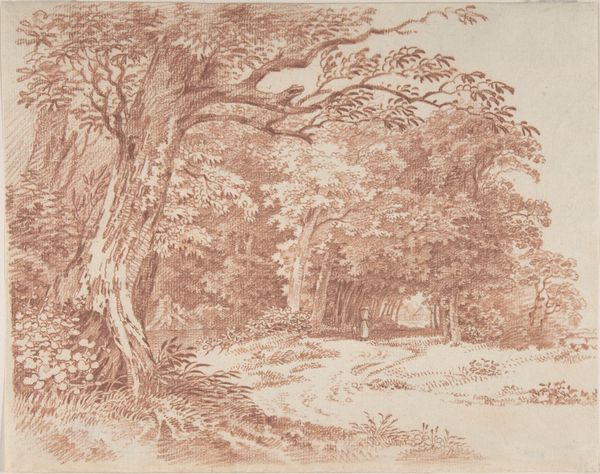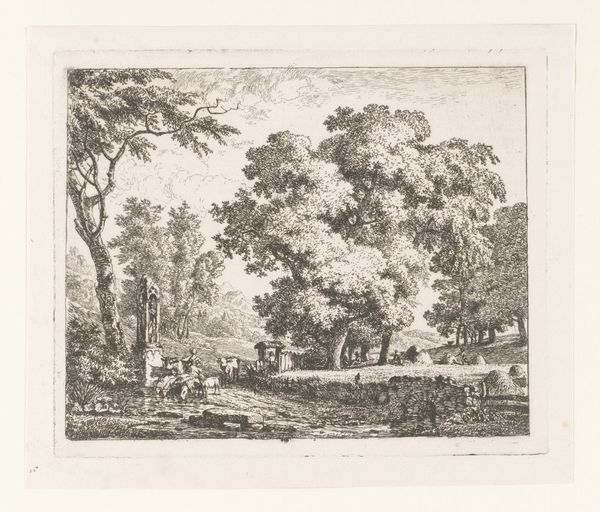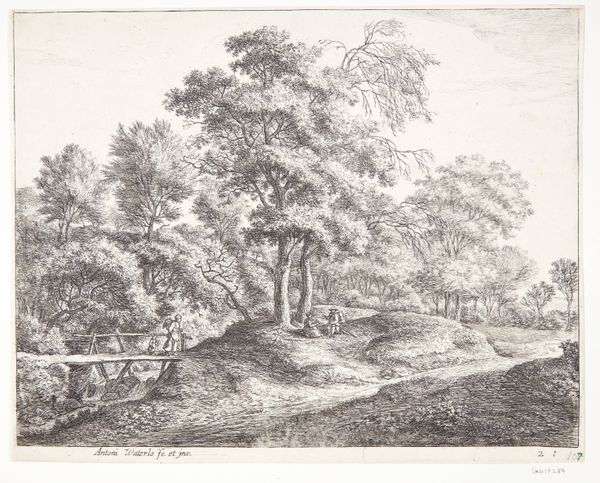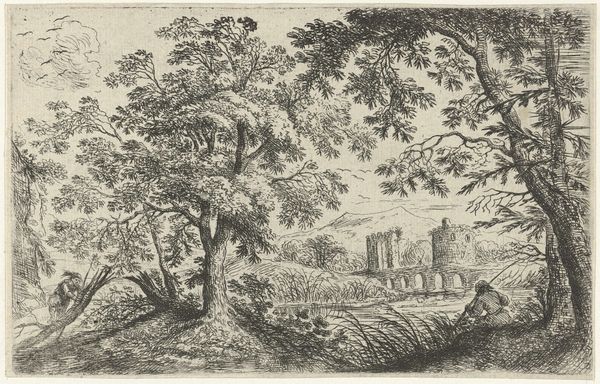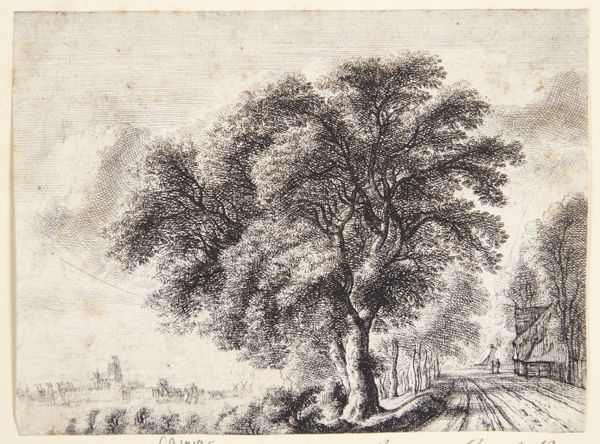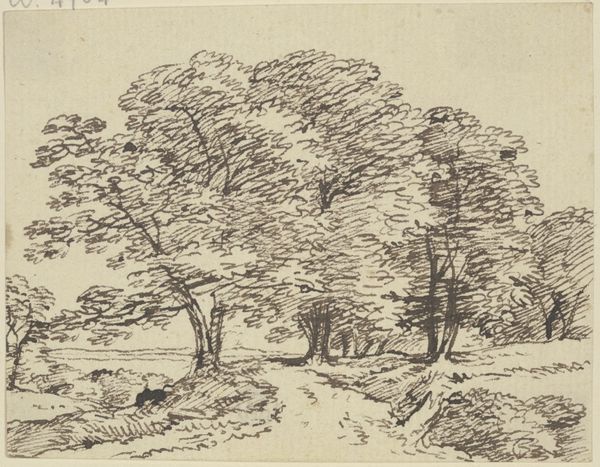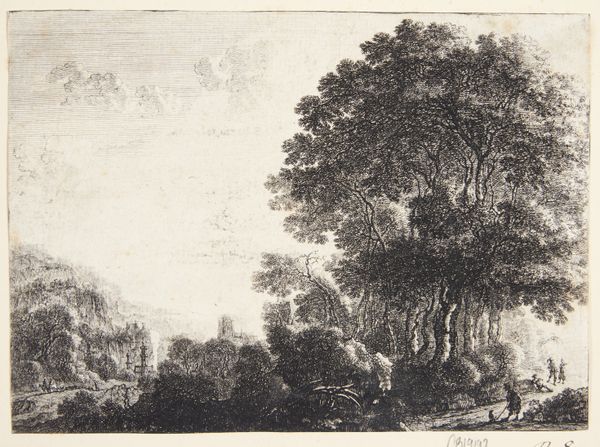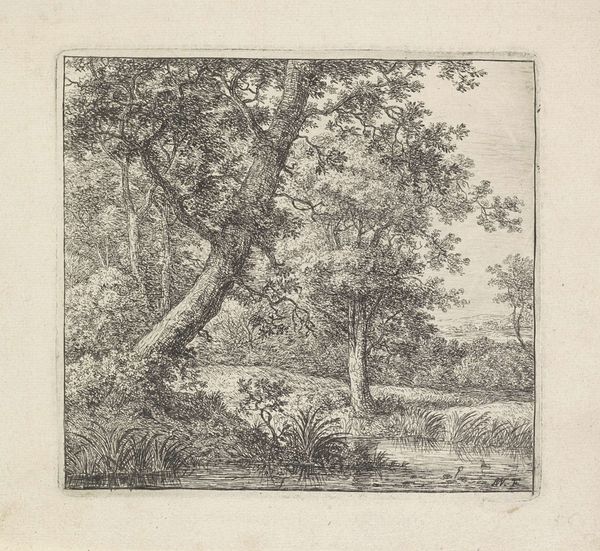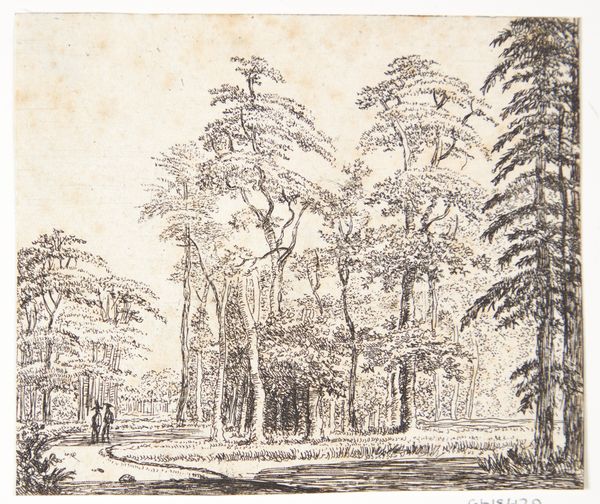
print, etching, ink, engraving
#
ink drawing
#
baroque
# print
#
etching
#
landscape
#
ink
#
engraving
Dimensions: 98 mm (height) x 156 mm (width) (bladmaal)
Editor: So, here we have Cornelis Matthieu’s “Landscape with a Fisherman,” made sometime between 1637 and 1656. It’s an etching, full of fine lines and detail, that create this tranquil scene. I'm really drawn to how the artist used the ink to define the shapes of trees and water. What do you see in this piece, looking beyond the surface? Curator: What strikes me immediately is how Matthieu uses the landscape not just as scenery, but as a reflection of the social and political context of the Dutch Golden Age. These serene landscapes, seemingly apolitical, can be read as subtle assertions of Dutch identity and autonomy, especially considering their fight for independence from Spain. What might the presence of the lone fisherman suggest about individual agency within this broader social narrative? Editor: That's fascinating. I hadn't considered the connection to Dutch identity. So the fisherman, is he kind of a symbol of freedom and self-reliance? Curator: Precisely. Think about the concept of common land and access to resources – water being vital. During this period, debates about land ownership and usage were deeply interwoven with ideas of freedom and social justice. Does the ruined building in the background give you any ideas about the artwork and its socio-historical context? Editor: It suggests decay, maybe the remnants of a past power structure? That puts a whole different spin on the fisherman’s presence! He is occupying land where social strata are becoming more accessible. Curator: Exactly! And the meticulous detail afforded to the landscape -- and specifically the working man in the scene, engages with burgeoning humanist ideals that start to pull focus toward lived experiences. How does seeing it this way change your initial perception of tranquility? Editor: It’s definitely less simple now. It feels like there's a quiet, revolutionary message hidden within the peaceful scene. Curator: I'm glad to have brought it to your attention. And now I look differently as well at the artwork. Thank you for your fresh eye, helping us both perceive new significances.
Comments
No comments
Be the first to comment and join the conversation on the ultimate creative platform.
